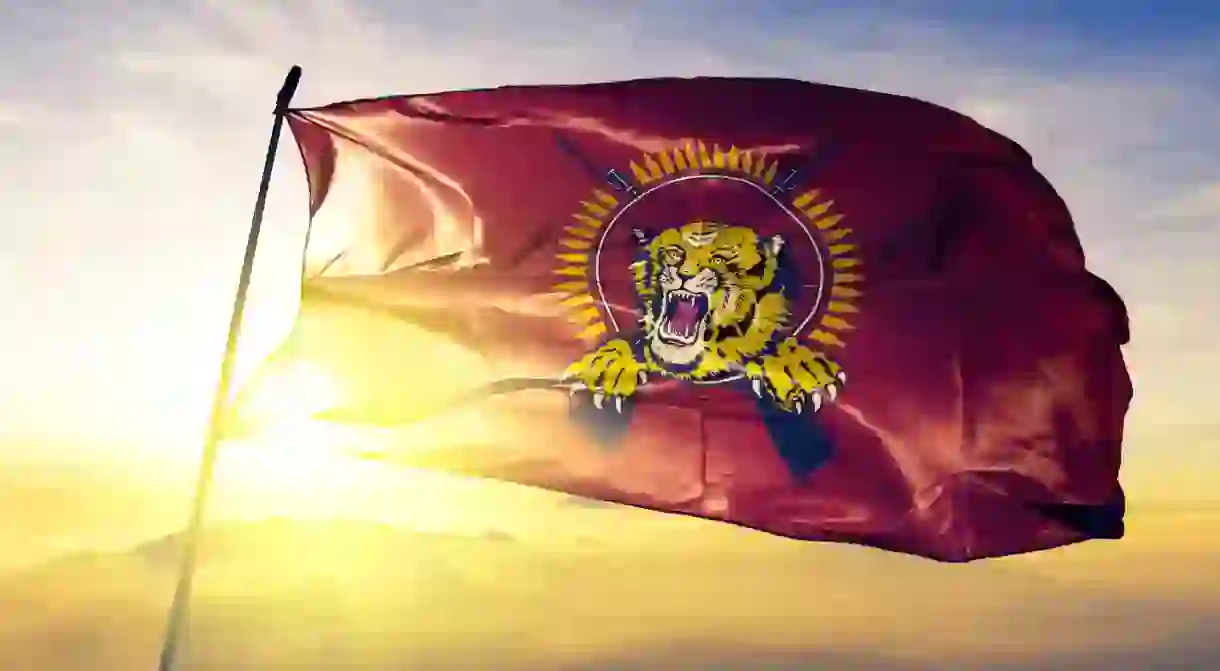A Brief Guide to Tamil Eelam

Sri Lanka, in the Indian Ocean off the southeast coast of India, has a Tamil population that forms a distinct social group, with their own language and historic traditions. Tamil Eelam is a proposed independent state in the east.
Location
Within Sri Lanka, Tamil territories make up seven of the country’s districts, predominantly in the north and east. The entirety of the Eastern Province (three districts), the Northern Province (three districts) and one district in the North Western Province are all Tamil. The East is where most Tamils live, where their proposed capital, Trincomalee, is also located.
There is a large Tamil population in India (over 60 million), as well as significant Tamil diasporas in Malaysia and Singapore. Tamil Eelam refers specifically to the Tamil-speaking area of Sri Lanka.
History
Historic tensions between the country’s two main ethnic groups, the Sinhalese and the Tamils, escalated after Sri Lanka (then called Ceylon) gained full independence in 1948. Under British colonial rule, Sinhalese land was seized and Indian Tamil communities settled as plantation workers. It caused huge unrest and a move of Sinhalese nationalism swept through the country once Britain left.
In 1956, the Sinhala Only Act was passed, making Sinhalese the only official language of Sri Lanka, instead of English. Tamils who didn’t speak Sinhalese, and who worked in public office or as civil servants, were forced to resign as a result and saw the new law as direct discrimination against them.
The LTTE was formed in 1976, founded with the aim of fighting for Tamil rights, but consistent conflict within Sri Lanka led to civil war breaking out in 1983. The conflict went on to last 26 years, killing approximately 80,000 people, until the LTEE was defeated. Although the civil war officially ended in 2009 there was continued conflict and fighting between Sri Lankan troops and Tamil rebels afterwards. Today, the official Leader of the Opposition is Rajavarothiam Sampanthan, the first Tamil in 32 years to hold that position.
Tamil Eelam are competing at the 2018 CONIFA World Cup, here’s everything you need to know about the tournament.
Political status
Officially recognised as a terrorist organisation by the likes of the US, UK and the EU, the Liberation Tigers of Tamil Eelam (LTTE) essentially operate a civilian government in the districts of Sri Lanka in which they inhabit – a move they see as enabling the transition into full independence. The LTTE civil administration covers a variety of departments, from health and education to banking and foreign affairs. Internationally, Tamil Eelam is considered within Sri Lanka, and doesn’t have any independence on the world stage.
Demographics
The demographics within the Tamil districts altered significantly during the civil war, with hundreds of thousands of Tamils either killed or fleeing their homes. In Sri Lanka as a whole, Tamils make up approximately 11% of the country’s population, with the vast majority living in the north and eastern districts as stated above.
Tamil is spoken as the first language by Sri Lankan Tamils, but also Moors (the country’s third biggest ethnic group) and by Indian Tamils, who mainly live in the centre of the country. The majority of Tamils are Hindu, with smaller Catholic, Buddhist and Muslim populations, all a similar size to one another.
With relative peace, certainly compared to the fighting of the last 30 years, the Sinhalese population has steadily increased in Tamil regions of the country.
Profile
Population: 3,496,000 approx.
Capital: Trincomalee
Major languages: Tamil
Currency: Sri Lankan rupee
Major religions: Hindu, Buddhist, Muslim, Catholic













